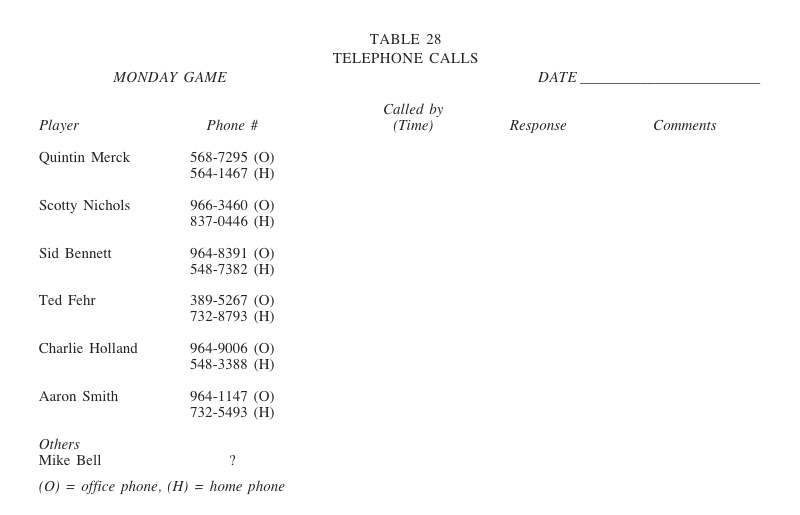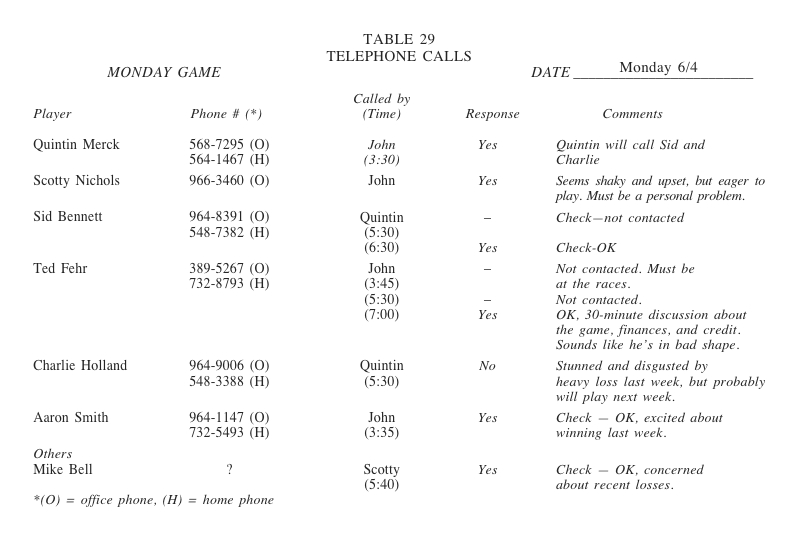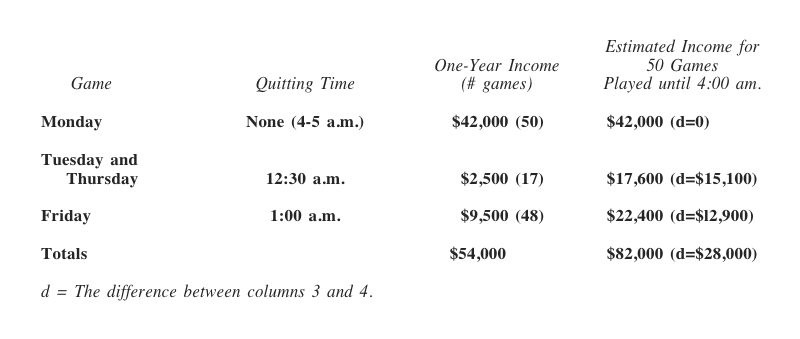Contacting Players
4. Contacting Players
A list of players and a telephone are two important tools for organizing a game. The good player usually asks other players to help him organize the game. (Eager players and recent winners will normally help.) To conceal his eagerness for losers to play, the good player asks other players to call the big losers. If negative feelings develop about his organizing efforts, he simply stops telephoning anyone for a few games.
His “strike” quickly makes the other players appreciate and support his organizing efforts.
The best time for telephoning players is late in the afternoon before the game. This is early enough so everyone can plan for the game and late enough so those available will seldom have a subsequent excuse for not playing. The good player then knows who his opponents will be for that evening.
An important and convenient tool is a photocopied form (as shown in Table 28) that lists the players’ names and telephone numbers along with a column for their responses. By filling out those forms (as shown in Table 29) and periodically reviewing them, the good player obtains valuable information about the—
- health of the game
- attendance patterns
- character of his opponents and their motives for playing
- losers with declining attendance records who may need special treatment to bring them back as regular players
- ways to keep the game organized and players interested.
In some games, players do not expect telephone calls. The game is played on a regular basis, and everyone just shows up. While such a game is convenient, the good player generally prefers to organize each game because his telephone calls provide opportunities to—
- get or provide “confidential” information
- increase his control over the game
- propagandize players and talk to them about their problems
- obtain definite commitments that make the game less vulnerable to collapse from a lack of players.
John Finn telephones the players each Monday afternoon and fills out the telephone-response form as shown in Table 29.


The data in the following chart indicate that personal considerations outweigh the additional $28,000 per year that John could have earned by playing as late and as often in the lower-stake games as he does in the high-stake Monday night game.
